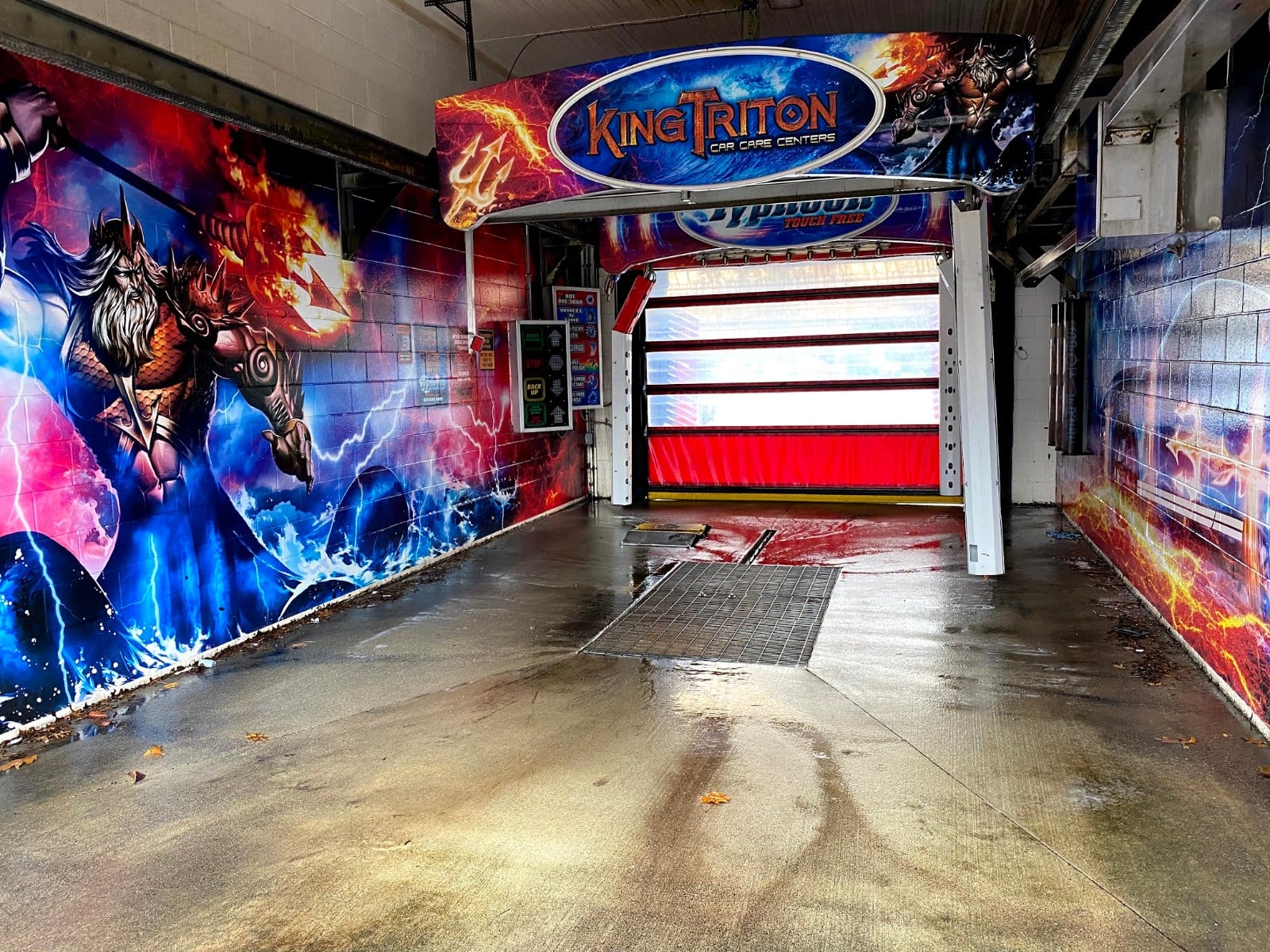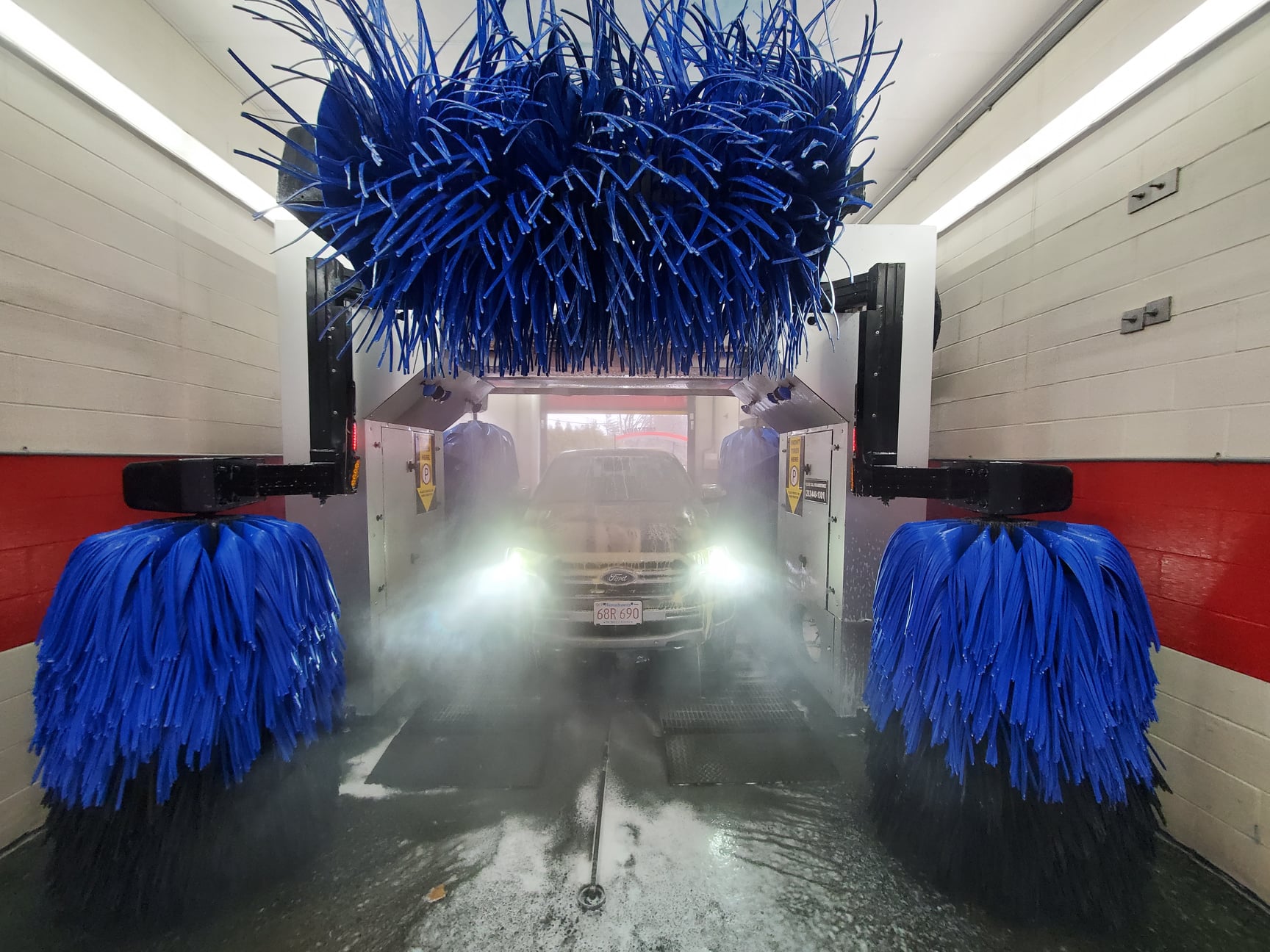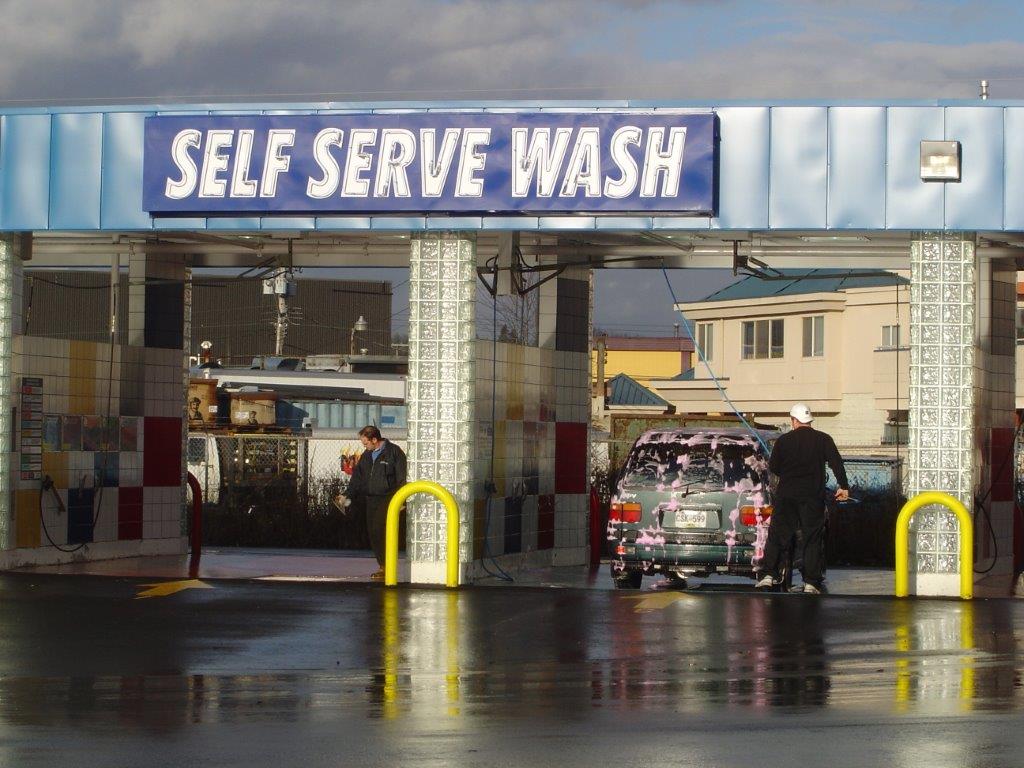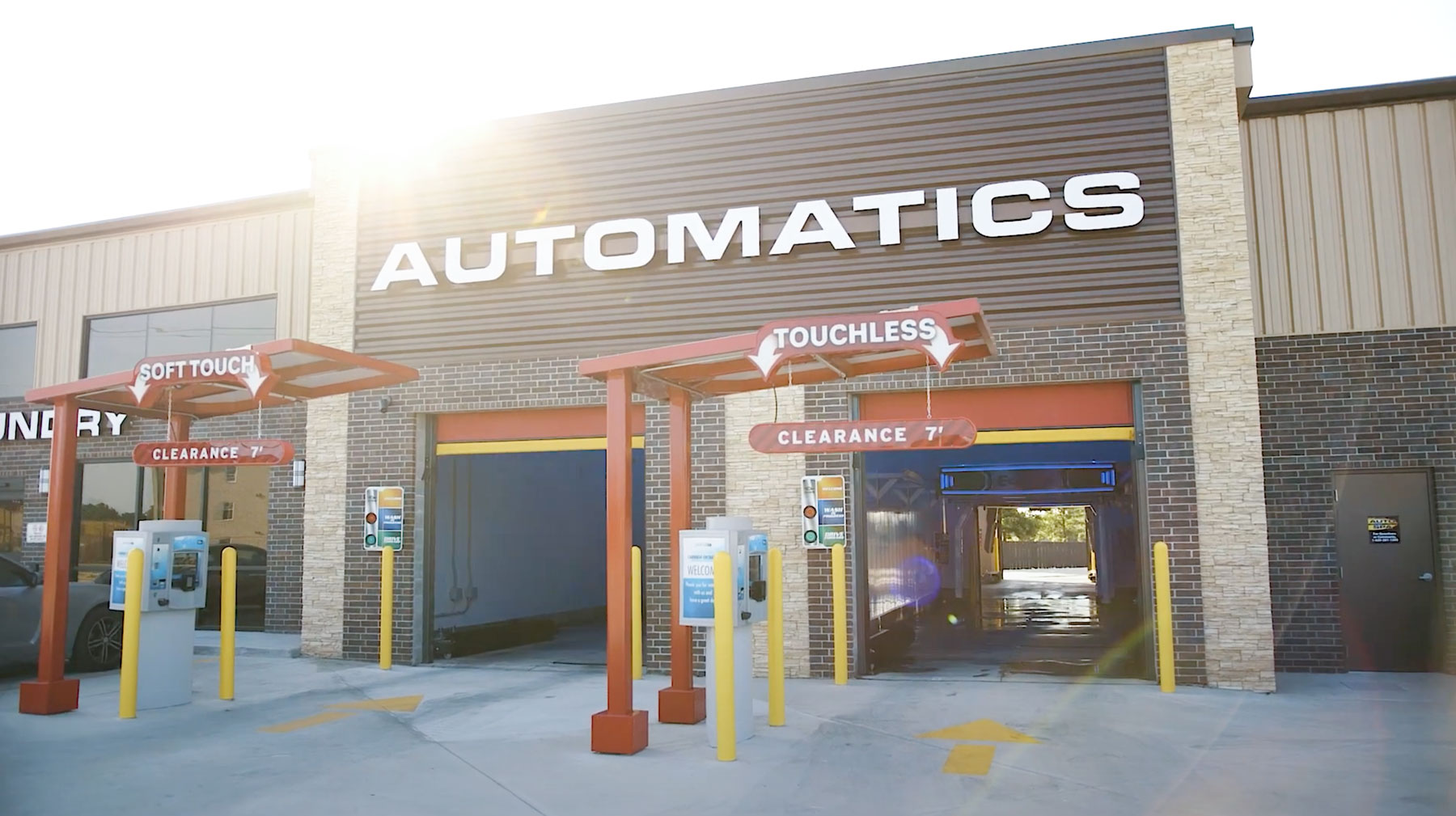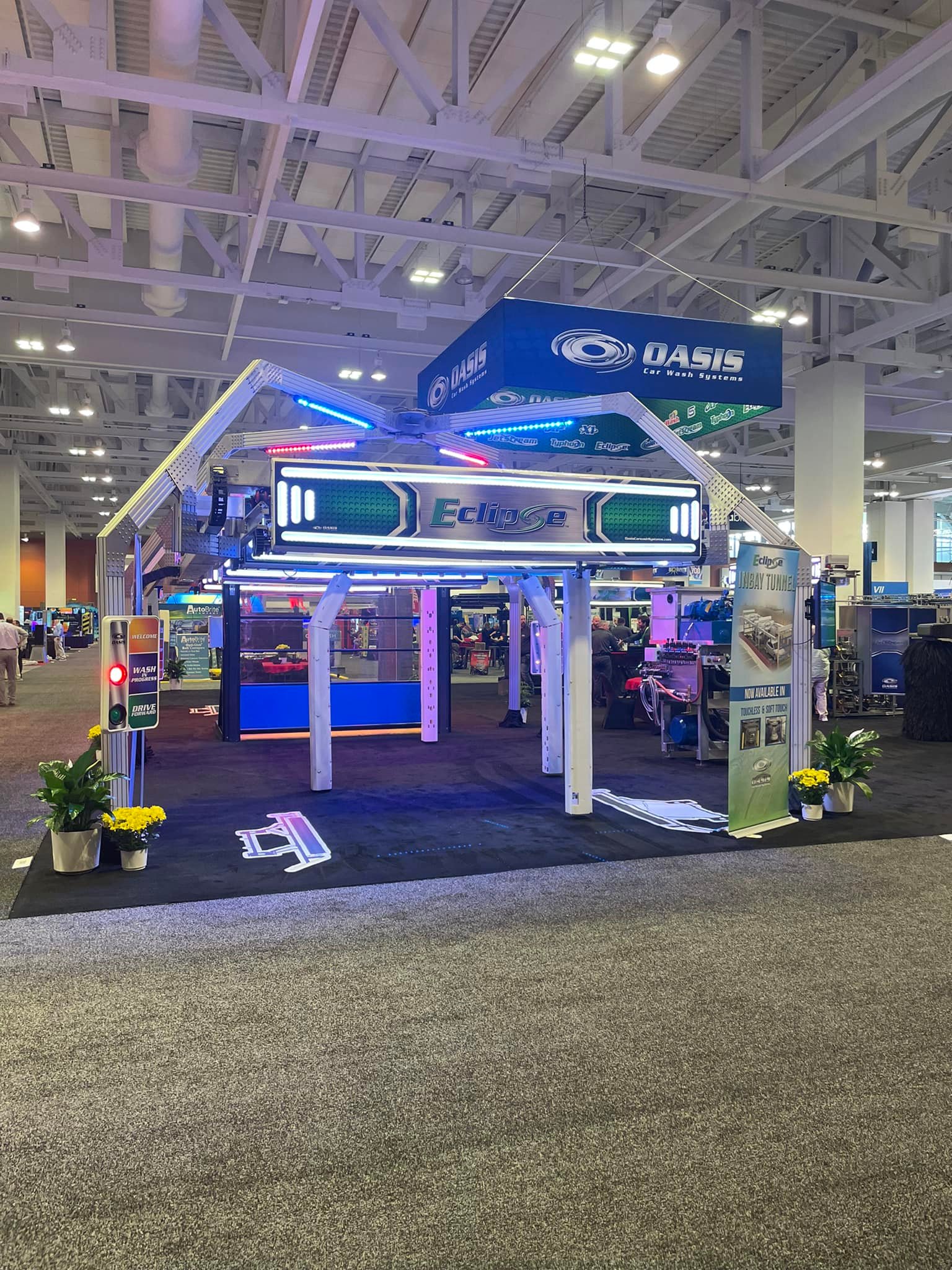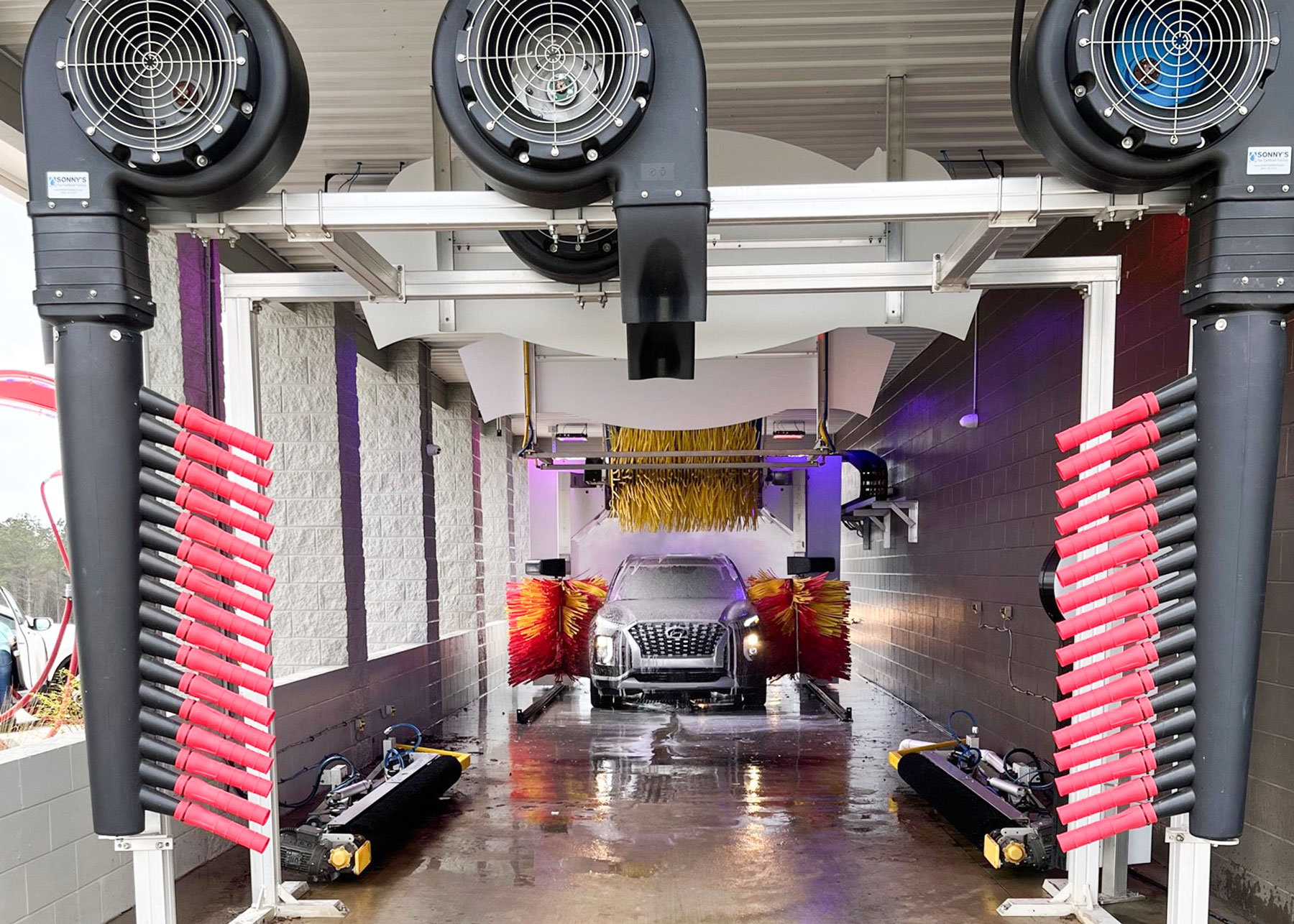At Oasis Car Wash Systems, we manufacture dependable, high-speed, and efficient car wash equipment with the investor in mind. Our products are made to be the best on the market. We don’t take shortcuts, because there’s no substitute for quality.
This Investor’s guide exists primarily for individuals looking to invest in the car wash industry for the first time, or who may only be curious about what’s involved in starting a car washing business. Though the following information is accurate, factors such as equipment, land prices, demographics for different areas of the country, and each investor’s personal expectations make it impossible for these guidelines to fit everyone. Once familiarized with the subsequent information, a potential investor should have enough background to begin researching equipment manufacturers and distributors who will be able to provide information such as pricing, equipment needs, and construction requirements.
Why invest in the car wash industry?
Owning a car wash can be a profitable investment opportunity.
Here are a few reasons why:
- Relative Autonomy – At a self-serve or automatic car wash, either the customer or equipment performs the labor, thereby eliminating the need for many employees. Generally, it only takes one or two workers to maintain and clean a site throughout busier parts of the day.
- Easy to Manage – From an operator’s standpoint, a car wash is relatively easy to run in that there are few personnel issues, minimal product inventories, and few maintenance requirements. Additionally, cash flow is not a problem in that there are no accounts receivable or personal checks.
- Low Cost – A car wash has low direct operating costs, and fixed costs – such as insurance and bookkeeping – are minimal.
- High Yield – The factors listed above – combined with 24/7, all-season demand, expansion opportunities, and tax incentives – can make your car wash a high-return investment enterprise.
Taking the Plunge
While it takes less work to run a car wash than many other businesses, an owner must be involved if they expect to turn a profit. Absentee owners not only make their sites vulnerable to theft and vandalism, but also compromise profits if they expect to maintain a clean, efficient site and keep customers satisfied. Though it is true a car wash can often “run itself”, owners should be present to perform maintenance and handle problems as they come. In order to grow and profit, an operator must approach car washing with the same “married to it” sense of commitment applied to any other small business.
Location
Choosing the right location is the most important step to running a successful operation. Some factors to consider follow:
- Traffic Count – A count of 10,000+ is desirable, but a lower traffic site may still succeed.
- Site Accessibility – A site should be highly accessible and visible from the street. Corner lots, access from both sides of the street, multiple driveways, and separate entrances and exits all make a site more accessible.
- Demographics – Being in a growing community, near a residential area (apartment complexes and housing developments), and surrounded by other convenience businesses is ideal.
- Diverse Climate – Some of the busiest car washes are in regions where the weather frequently changes. Adverse weather conditions, especially snow, boost business considerably.
- Zoning Laws – Local zoning laws should be checked when choosing a site.
- Competition – Nearby competition should be at least one to two miles away for a heavily populated area, and farther in spots that are more rural.
- Access to Utilities – Availability of electrical, gas, and sewer services should be considered.
Equipment
In self-serve and automatic car washing, equipment is a site’s bread and butter. That is why buying the cheapest equipment available leads many investors to the unintended consequences of costly maintenance and downtime. Although price will be one of many determining factors in choosing equipment, the main thing to consider is value. Dependability, warranty, output capabilities, cleaning power, and durability are some of the factors to keep in mind when considering the value of equipment.
With all the different manufacturers and types of equipment on the market, knowing what to buy can be difficult. Understanding the basic differences between makes of equipment helps narrow the choices.
Self-Service
Self-service refers to the type of equipment customers use to perform the act of washing cars themselves, using a high-pressure wand and a brush. Many car washes consist entirely of self-service equipment, while others use a combination of self-service bays with one or more automatic bays.
Self-service washes tend to be a planned destination for consumers, whereas using automatics is usually an impulse decision. Though not as convenient for many consumers, self-service equipment can be a good investment in small towns that do not have the population or traffic to support an automatic, or when used to diversify washing options at a site that does have an automatic.
Choosing Self-Service Equipment
Factors to seek when choosing self-service equipment include:
- Technological Superiority – The electronics and computer that control the self-serve system should be modern and easy to operate, and the mechanical components should be efficient yet powerful.
- Simple to Maintain – Easy maintenance and accessibility are crucial to eliminating down time and staying profitable.
- Flexibility – A self-serve system should offer multiple products and service options so the customer is encouraged to spend more time in the bay. Furthermore, operators should have the ability to automatically change price/time options to promote sales during slow periods of the week.
- Expandability – The ability to add more options and expand the output capability of the unit should exist, and the unit should be easy to update as newer technology becomes available.
- Streamlined Engineering – A self-serve unit should be designed to be self-contained and compact enough to save space in a control room while maximizing performance capabilities.
- Durability – As with all car wash equipment, self-serve units should be able to withstand years of heavy usage with minimal maintenance.
Automatic
At the right location, offering one or more automatic car wash bays in addition to, or even in place of, a self-service operation can substantially benefit profits. Taking less time to complete while giving customers the convenience of never needing to leave their cars, automatics outreach self-serves in a market sector where expediency and ease are highly valued.
Most automatic car wash equipment is defined by a few different classifications. In-bay automatics, the most common type, are available in brush-wash or touch-free versions. With this type of equipment, the customer drives their car into the bay, stops, and the wash equipment passes over the vehicle to perform the wash function. In-bay automatics do not generally require an employee to guide customers into the bay.
Conversely, another type of touch-free and brush wash equipment operates by dragging the vehicle, on a conveyor, through stationary equipment in a tunnel bay. Conveyor washes, also referred to as tunnel washes, require an attendant to help customers align their vehicles to the conveyor’s dragging mechanism.
Choosing Automatic Equipment
Among the basic varieties of automatic equipment, research shows industry trends favoring touchless, in-bay automatics over the last several years. Several factors contribute to the steadily increasing popularity of these machines as compared to in-bay brush and touchless and friction conveyor washes.
Since in-bay automatics do not require an attendant to guide the customer into the bay, owners can leave their businesses running 24 hours a day, seven days a week. From a customer’s standpoint, the convenience of being able to drive into a car wash whether or not an employee is present is a draw.
During a touch-free wash, no equipment contacts the car, minimizing the prospect for damage to the vehicle. Friction washes, on the other hand, use spinning brushes to clean the automobile by direct contact. Both methods produce clean results.
Many operators offer both touchless and soft touch to allow customers the opportunity of choice.
Which Touch-Free?
Though all touchless equipment uses the same basic concept to clean cars, methods vary greatly among manufacturers. Variations in operating costs, washing speed & capabilities, dependability, construction, and washing techniques are found from one manufacturer to the next.
After choosing a location, investors should have a good idea about their equipment needs. For example, an investor with a high traffic count in an accessible part of a growing community will most likely want to install more than one automatic and several self-service bays. A car wash owner in a more rural area may only need one automatic and a few self-serve bays. Once the investor anticipates how busy the site will be, considering the following factors will help determine the equipment choice:
- Output – How much will be demanded from the equipment? On busy days when customers are lined up in front of the wash bay, the speed at which the equipment can clean cars has a direct effect on income.
- Operating Costs – Though costs of water and power are a factor, the real difference among manufacturers is in equipment upkeep and maintenance costs. A machine requiring frequent repair is not only costly from a parts and service standpoint, but also lost sales. A machine down for repair is not washing cars, therefore not making money. Equipment with the most streamlined construction will require the least amount of upkeep because fewer things can go wrong.
- Capabilities – To clean cars effectively, a car wash should adjust to the size of each vehicle. This ensures that the washing solutions and high-pressure water are able to perform properly no matter what size automobile comes through the wash. Furthermore, a capable car wash offers the end user different options about the way they want their car cleaned. Operators should be able to program the equipment to suit a wide variety of users, from those needing a basic wash and rinse to those requiring a wash complete with wax and a blow-dry.
- Simplicity – A well-designed machine is built to run efficiently and smoothly, minimizing the number of moving parts in order to last longer and require less upkeep. Furthermore, programming and making changes to the machine’s operating system should be straightforward and simple so the operator can make changes as needed.
- Warranty – Plain and simple, a car wash is only as good as the company who stands behind it. A short-term warranty is a sign of inferior workmanship or trouble-prone equipment. Protecting an investment with the best warranty possible is a no-brainer.
- Support – Distributors sell most car wash equipment to end users. This is an advantage to the investor because it means someone in their area will be readily available to provide parts and equipment service. Distributors are also beneficial to investors who are still shopping for equipment, lending expertise in everything from dealing with city councils and zoning laws to selecting a great location. A big part of an investor’s decision-making process should be allotted to choosing a distributor. If in a region without a suitable distributor, buyers should look for an equipment manufacturer with a strong, helpful, and available support staff.
Other Equipment
After self-service and automatic equipment is chosen, other important equipment choices remain. Support equipment, such as changers and cashiers, must be selected, as well as add-ons such as vacuums, vending machines, and stand alone dryers, which turn a location into a full service wash, increasing revenue.
Cashiers and Changers
Upon visiting a site, a customer’s first interaction with the wash equipment will be through an automatic cashier or a bill changer. Therefore, these machines should not only incorporate modern technology, but be easy to use as well. Cashiers and changers should offer versatile payment options and clear instructions for the customer. A versatile bill acceptor or auto cashier will accept credit cards, wash tokens and certificates, cash, and coins. Menus and options should be highly visible and well lighted.
Vacuums and Vending
Nearly all self-service and automatic wash locations offer customers interior maintenance options, including vacuums and vending for products such as fragrance, glass cleaners, and interior cleaners & protectants. Adding vacuums and vending gives customers the ability to clean their cars, inside and out, at one location, while maximizing investment return for the owner.
When shopping for vacuums and other add-on equipment, an investor should look for the most flexible, attractive equipment available. A versatile vacuum, for instance, may offer customers the ability to shampoo their interior before vacuuming. Vending amenities should also offer a wide variety of products, from disposable towels to air fresheners. Providing customers with these products and services not only adds to the site’s profits, but also gives customers the idea all their needs are being met.
Vacuum and vending stations should be colorful, well lighted, and kept in clean, working order.
Construction
A good distributor is crucial in helping through all stages of the construction process, but the general guidelines, which follow, will provide assistance in getting started.
Once a location is chosen and a site plan formulated, construction may begin. Potential investors are often curious as to the cost of building a car wash, but with so many construction options available, not to mention differences in cost by region, it is impossible to give an accurate cost estimate without knowing site specifics.
As a general approximation, however, cost often runs between $40K and $60K per automatic bay. Again, this varies widely depending on the structure type and location.
If a site is deemed feasible and the decision is made to begin construction, one of the first necessary steps is to obtain availability letters for all site utilities. Zoning permits have to be secured as well – a sometimes-lengthy process on which the investor should have a handle before investing too much time and money on the site.
Once confident the car wash will be built at the chosen location, an investor should team with a distributor and builder to formulate the best site design for high revenue.
To maximize revenue, a site should be built for easy customer access, with a separate entrance and exit. The wash should be attractive and highly visible from as many directions as possible. To increase security, as well as ensure customers use the facility well into the evening hours, a site should be as heavily lighted as possible, making customers feel safe and welcome.
Marketing
Good marketing will make or break a car wash operation. If an investor has the best equipment available but fails to proclaim it to the world, he has negated his efforts. Conversely, imagine how a wash could out-perform its competition if it had great equipment and stellar marketing.
As previously mentioned, the most important aspect of wash marketing is visibility. In the automatic sector especially, a car wash is an impulse stop for customers, so the more visible and accessible a car wash, the higher its revenue.
Not only should the wash building itself be highly visible, but wash signs should be well lighted, informative, and attractive. Signs can be incorporated tastefully through all aspects of the location, from the sign at the street advertising the wash, to the smaller instructional signs in the wash bays. To achieve a professional look, all signs should be consistent in style and color.
Promotions and Discount Programs
To further market a location, operators should turn to promotions, discount programs, or even wash clubs. For example, to generate more business through a slow month in sales, an operator may offer customers one dollar off all automatic washes, or give extra time in self-service bays. This is why it is important, as discussed earlier, to have flexible equipment with easy-to-change programming.
Other promotion ideas include soliciting local businesses and schools for fleet discount programs. Some operators also reward customer loyalty by giving discounts to frequent, faithful customers. For instance, customer purchases could be tracked and rewarded with a free wash after the tenth one purchased.
Updating equipment with new features is also a great way not only to promote the site, but stay ahead of the competition. When equipment is updated, an operator should advertise the improvement and explain how it will benefit the customer.
Marketing should be a constantly evolving process at any wash, and should be among the highest priorities of running a site. Through visibility, accessibility, promotions, and personal contact with the community, operators can ensure their investment is getting the promotion it deserves.
Maintenance
To keep customers satisfied and costs at a minimum, operators should always ensure the site is clean and equipment is functioning at its best. It is a good idea for an employee or owner to spend at least a few hours every day cleaning the lot and wash bays. Proper equipment performance relies on timely preventive maintenance. To minimize down time, an operator should perform preventive maintenance during slow periods of the week and always keep commonly replaced parts on hand for quick repairs.
Conclusion
Though this Investor’s Guide was not intended to answer every question about investing in the car wash industry, our hope is that it provided a better understanding of where to begin. Should you have further questions regarding the issues raised in this guide, please contact Oasis.
Oasis wishes new investors the best of luck in this profitable, growing industry.


